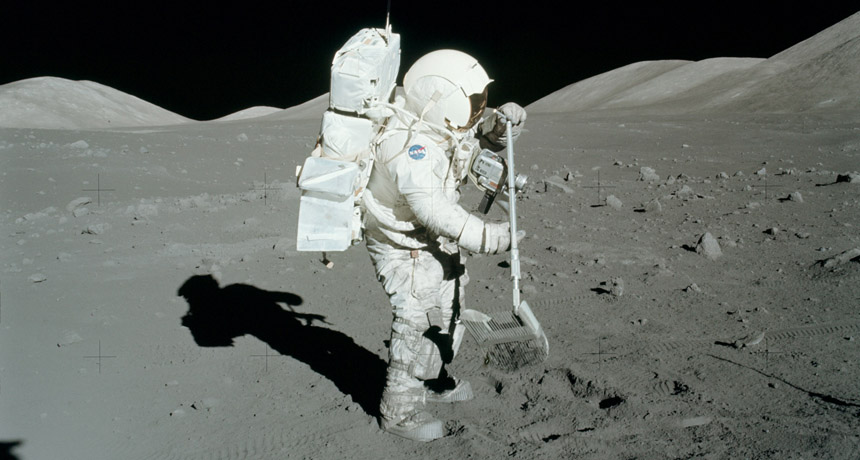Sun may make most of the water on moon’s surface

A closer look at moon rocks from the Apollo missions suggests that particles from the sun, not meteorite impacts, are responsible for giving the lunar surface most of its water.
NASA

A closer look at moon rocks from the Apollo missions suggests that particles from the sun, not meteorite impacts, are responsible for giving the lunar surface most of its water.
NASA